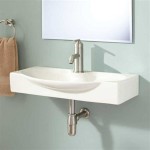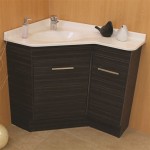Can You Paint Bathroom Counters?
The bathroom is a high-traffic area in any home, and the counters often bear the brunt of everyday use. From toothpaste splatters to spilled shampoo, bathroom counters can quickly become stained and discolored. If you're looking for a quick and affordable way to refresh your bathroom, painting your counters might seem appealing. But can you actually paint bathroom counters, and if so, what are the dos and don'ts?
The answer is, it depends. While painting bathroom counters is possible and can yield impressive results, it's not a project for the faint of heart. It requires careful preparation, the right materials, and a steady hand. Factors like the existing countertop material, the desired finish, and your level of experience will all play a role in the success of the project.
Choosing the Right Countertops for Painting
Not all bathroom counters are created equal when it comes to paintability. Some materials are more receptive to paint than others. Here's a breakdown of common countertop materials and their suitability for painting:
- Laminate: Laminate countertops are typically the most popular choice for painting. Their non-porous surface makes them easy to clean and prepare for paint. The smooth, flat surface also ensures a consistent paint application.
- Formica: Similar to laminate, Formica is a highly paintable material. Its smooth, durable surface provides a good adhesion base for paint.
- Tile: While tile countertops can be painted, it's a more involved process. The grout lines need to be carefully masked and the tiles themselves require proper preparation to ensure the paint adheres well. In some cases, it might be more effective to simply re-grout the tiles.
- Solid Surface: Solid surface materials like Corian and DuPont Zodiaq are generally not recommended for painting. Their smooth, non-porous surfaces can make it difficult for paint to adhere properly. Additionally, solid surfaces are often quite expensive, so painting them may not be the most cost-effective solution.
- Granite and Marble: Painting granite and marble is not advised. These natural stones are porous and uneven, making it challenging to achieve a uniform and durable paint finish. The paint may also chip or peel over time.
Preparation is Key
Regardless of the countertop material, proper preparation is essential for a successful paint job. This involves cleaning, sanding, and priming the surface to ensure optimal paint adhesion:
- Thorough Cleaning: Begin by removing any existing debris, grease, or soap residue from the counter surface. Use a mild detergent and warm water, and scrub gently with a non-abrasive sponge or cloth. Allow the surface to dry completely before moving to the next step.
- Sanding: Sanding helps create a rough surface for the paint to adhere to. Use fine-grit sandpaper (120-grit or higher) to lightly sand the entire surface, paying particular attention to any imperfections or scratches. Remove any sanding dust with a damp cloth.
- Priming: Priming serves as a barrier between the countertop and the paint, preventing moisture from seeping through and causing the paint to peel. Choose a primer specifically designed for your countertop material. Apply the primer in thin, even coats, allowing each coat to dry completely before applying the next.
Painting the Counters
Once the preparation is complete, you can finally start painting. Use a high-quality acrylic paint designed for countertops or cabinets. Choose a paint with a satin or semi-gloss finish, as these are more durable and easier to clean. Apply the paint in thin, even coats, allowing each coat to dry completely before applying the next. Use a high-quality paintbrush or roller for a smooth finish.
If you're painting a laminate counter, a brush will typically yield the best results. For a tile counter, a small roller can help you cover the surface more efficiently while avoiding the grout lines. For a seamless finish, consider applying two or three coats of paint. Let the paint cure completely before using the counter. It usually takes 24 hours for the paint to fully harden.
Important Considerations
There are some important factors to consider before embarking on a countertop painting project:
- Ventilation: Paint fumes can be harmful, so ensure adequate ventilation in your bathroom. Open windows and run a fan while painting and during the drying process.
- Safety Precautions: Wear a mask and gloves to protect yourself from paint fumes and potential allergens.
- Maintenance: While painted countertops can be cleaned with mild detergents, avoid using abrasive cleaners or scrubbers that could damage the paint surface.

Paint Bathroom Vanity Countertop Sink So Easy A Piece Of Rainbow

How To Easily Spray Paint Bathroom Countertops My Homier Home
:strip_icc()/101922779-2cbc45e123c34827afb4f601723b03ca.jpg?strip=all)
How To Paint Bathroom Countertops

How To Paint A Countertop Don T Make These Mistakes Blessed Beyond Crazy

How To Easily Spray Paint Bathroom Countertops My Homier Home

Paint Bathroom Vanity Countertop Sink So Easy A Piece Of Rainbow

How To Paint A Countertop Don T Make These Mistakes Blessed Beyond Crazy

How To Paint Tile Countertops And Our Modern Bathroom Reveal Bright Green Door

I Chalk Painted My Countertops Lolly Jane

How To Refinish Laminate Counters Made By Marzipan
Related Posts







